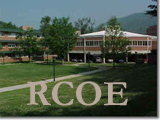Artifact # 3: Reading Assessment & Correction
Artifact # 4: Beginning Reading & Writing
Artifact # 5: Children's Literature
Artifact # 6: Multi-Genre Project
Artifact # 8: Parental Involvement
Artifact # 9: Professional Growth & Development
Context: This artifact was developed in RE 5730 . During the course, I learned many strategies for helping students use reading and writing as tools to help aid in comprehension of both nonfiction and fiction texts. I developed a Novel Study using both nonfiction and fiction texts together that concerned issues related to the Civil Rights Movement. I developed Guiding Questions that were connected to civil rights and the civil rights movement during the 1960s. I also indicated which text and activity would be used in relation to each question. A Unit Introduction explained the key concepts that would be the focus of the unit. I also included a Rationale and Curriculum Goals that would be helpful to students in finding out why this topic is important. A day by day Overview of Unit Activities was included to help engage students in the learning of the Civil Rights Movement. By using varied genres of literature closely related to the same topic, students are given the opportunity to explore many ways of looking at a given topic. As I have discovered in my own classroom, using both fiction and nonfiction text together to teach a topic, encourages the enjoyment of reading while satisfying their fascination with facts.
Alignment:
Standard A: Instructional Expertise This standard reflects the use of technology within the classroom to create a love of reading while studying the exploring an author's style of writing. It also shows my understanding of the importance of selecting the best possible literature to enhance student learning.
Standard B: Knowledge of Learners This shows how the delivery of instruction can be responsive to all styles of learning.
Standard C: Research This standard indicates the use of research
Standard D: Content Knowledge This demonstrates the most recent content knowledge available to educators. The knowledge is used and applied across the disciplines to foster student learning.
